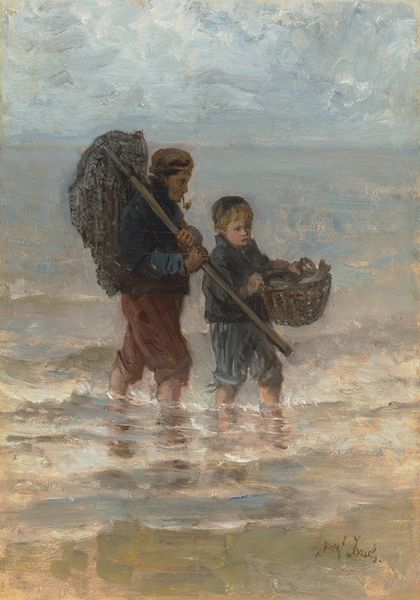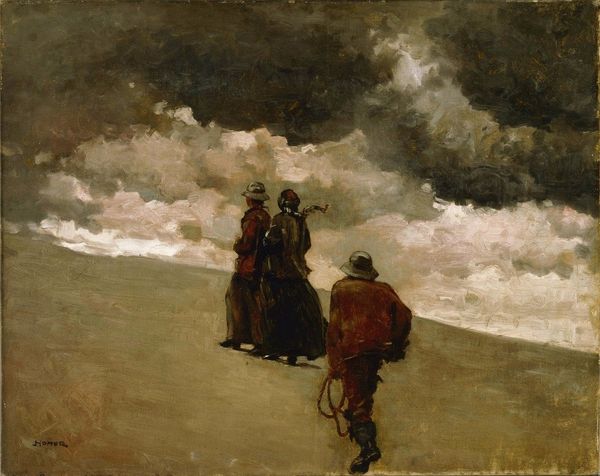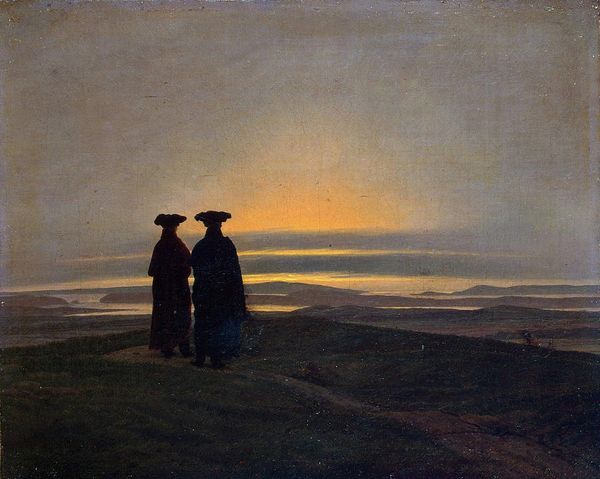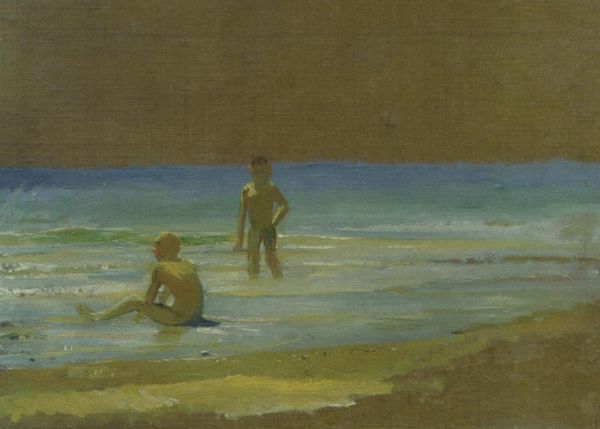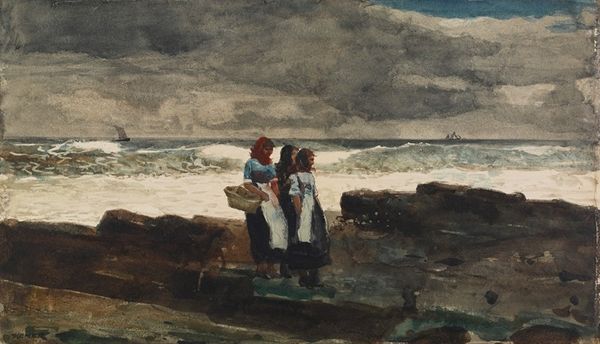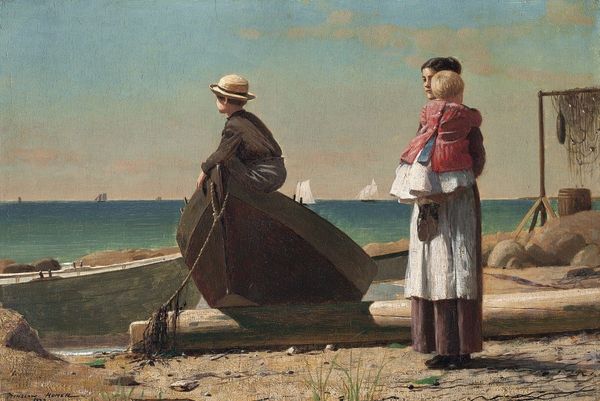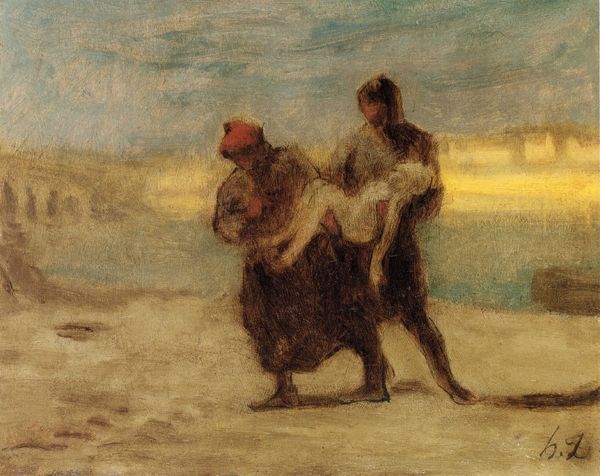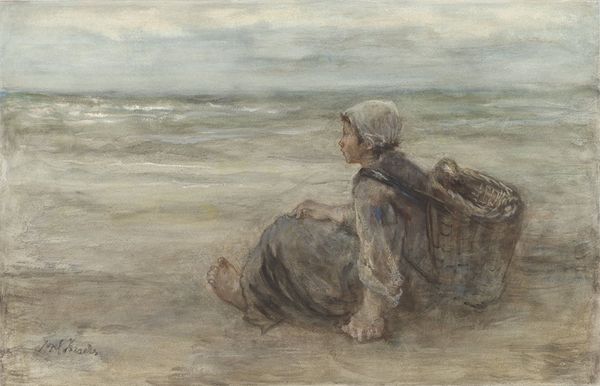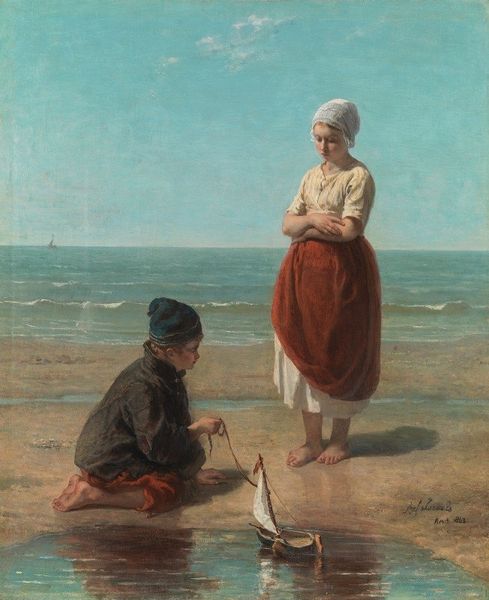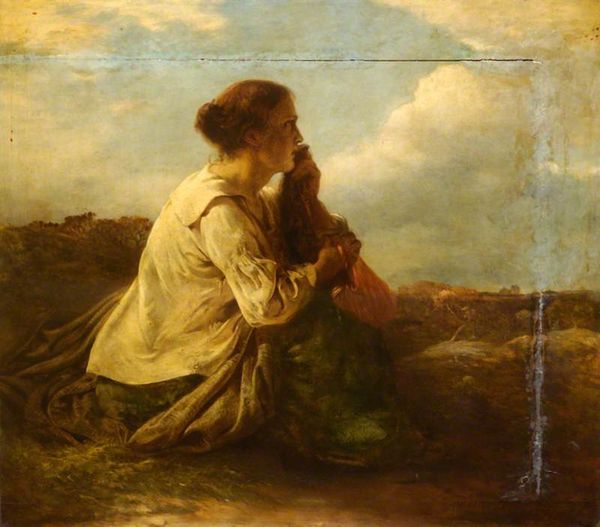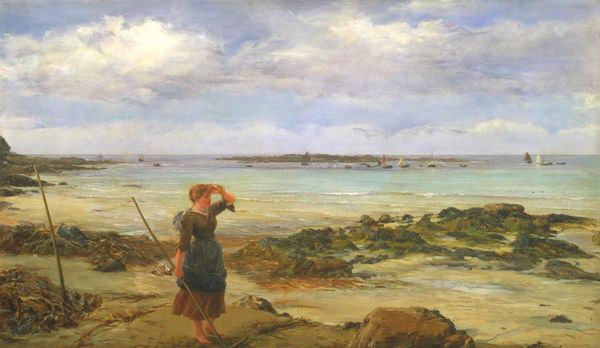
painting, oil-paint
#
portrait
#
gouache
#
mother
#
painting
#
impressionism
#
oil-paint
#
landscape
#
oil painting
#
child
#
genre-painting
Dimensions: 19 × 29 1/8 in. (48.4 × 74 cm)
Copyright: Public Domain
Editor: Jozef Israëls’s “Mother and Child on a Seashore,” painted around 1890, uses oil paint to capture a quiet moment. I am struck by its somber, almost melancholic tone. What's your take? How do you interpret this work? Curator: The melancholic mood you mention is quite palpable, isn’t it? Considering Israëls's background and the socio-political climate of the late 19th century, specifically the rise of social realism and a growing interest in depicting the lives of the working class, how does this image speak to broader social concerns? Editor: Well, the mother and child seem to be from a humble background, perhaps fisherfolk, gazing out at a seemingly endless sea. Is he commenting on the plight or perhaps resilience of those living such lives? Curator: Precisely! Israëls was known for portraying the dignity and quiet suffering of the working class. This work fits squarely within that tradition. Think about the art world's structure: who got attention, and whose lives remained unseen? Editor: That makes me wonder if showing everyday lives this way had a political dimension. It would require challenging whose stories got told in art. Curator: Exactly! Artists like Israëls helped shift that focus, highlighting the experiences of marginalized communities. Now, look closely at the composition. What's the effect of placing the figures so close to the viewer and so near the horizon? Editor: It makes the scene feel intimate yet expansive at the same time. Perhaps, this echoes the mother's emotions, confined and full of hope for the future of her child. I see this artwork with totally fresh eyes! Thank you. Curator: My pleasure. Thinking about the public role of art like this expands our understanding beyond just aesthetics.
Comments
No comments
Be the first to comment and join the conversation on the ultimate creative platform.

